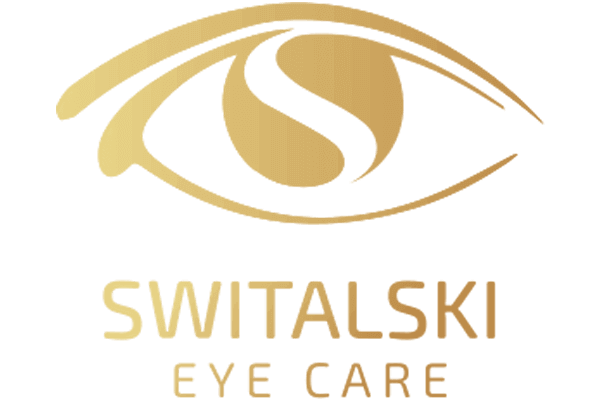
Contact Lens Eye Exams in East Plano
Have astigmatism and want to wear contact lenses? No problem!
Astigmatism is a common refractive error caused by an abnormal or uneven curvature of the cornea that impedes your eye's ability to focus light properly on the retina. This results in blurry or distorted vision that makes it difficult to distinguish forms and details at any distance. It can also cause headaches, fatigue and eye strain.
Fortunately, there are several types of contact lenses that correct astigmatism, as well as nearsightedness and farsightedness.
Can I Wear Contacts with Astigmatism?
If you have mild to moderate astigmatism, contacts are an affordable and convenient way to correct your vision. In fact, contacts can reduce distortion, offer a wide visual field, and improve visual clarity.
Toric contact lenses are one type of contact lens— in fact, they're specifically designed to correct astigmatism. They're slightly thicker and larger, and more stable on the eye than non-toric contacts.
Toric lenses have various design features to ensure they sit correctly on your eye. One of them is the weight at the bottom made to keep them in place and prevent rotation. These lenses are also designed to move with your eye, allowing tears to flow under the lens so you can maintain comfortable and clear vision.
There are two types of astigmatism:
- Regular or corneal astigmatism. This is the most common form of astigmatism. It occurs when the cornea curves in more than one direction, and instead of a sphere, it's oval-shaped. This type of astigmatism can be corrected by wearing contact lenses, glasses, or through surgery.
- Irregular astigmatism. This occurs when the cornea unevenly curves in several directions and in varying degrees. In such cases, rigid gas-permeable (RGP) contacts are the best option.
Types of Contact Lenses for Astigmatism
There are four types of toric contact lenses, each with its own advantages and disadvantages.
Soft contact lenses
Soft contact lenses are a popular choice for those with mild to moderate astigmatism. Their softness and flexibility provide comfort, they're simple to insert and remove, and stay put on the moving eye. However, achieving the best final prescription can be challenging, especially for moderate to high levels of astigmatism, as the visual clarity might not be as stable as an RGP lens. Your optometrist might need to make several adjustments to achieve desired results.
RGP contact lenses
While RGP lenses are smaller and harder than soft lenses, they are more oxygen-permeable and allow more tears to surround the lens. At first, these lenses may feel less comfortable than soft contacts since they are less flexible. Overtime, as you get used to wearing them, these lenses will become more comfortable.
Because they maintain their shape, RGP lenses are more effective than soft lenses at correcting astigmatism and improving visual clarity. They also keep their shape when you blink, allowing for a more stable and clearer vision. That said, they can dislodge during strenuous physical activities. Another disadvantage of RGP lenses is that debris, such as dirt and dust, may get trapped under the lens and cause irritation.
Hybrid contact lenses
Hybrid contacts combine a rigid gas-permeable center with softer edges composed of soft hydrogel or silicone hydrogel. These lenses provide comfort while maintaining the clarity that RGP lenses provide. Because of their large size and thin edges, they're less likely to fall out during physical activities.
Scleral contact lenses
Scleral lenses are rigid and maintain their shape regardless of the corneal shape. In addition, they sit on the sclera rather than the cornea, allowing the eye to properly focus light and therefore ensuring sharp vision and comfort. The liquid reservoir trapped behind the scleral lens compensates for corneal astigmatism and ensures a secure fit.
How We Can Help
During your comprehensive eye exam, we'll determine the severity of your astigmatism, as well as your degree of farsightedness or nearsightedness. We will also recommend which contact lenses are best for you, based on your needs. In some cases, your astigmatism will require custom-made toric contact lenses.
Schedule an appointment with Switalski Eye Care in East Plano to receive your contact lens eye exam and initial lens fitting, the first step toward sharper, more comfortable vision.
Q: Is a contact lens exam the same as a regular eye exam?
- A: If you wear or want to wear contacts, you need a contact lens exam in addition to a regular eye exam. Your eye doctor will perform special tests during a contact lens exam to evaluate your vision with contacts.An eyeglass prescription is not the same as a contact lens prescription. A contact lens prescription measures lenses that sit directly on the surface of the eye, whereas an eyeglass prescription measures lenses that are positioned around 12 millimeters from your eyes. After your eye doctor has determined your prescription they will conduct a contact lens fitting.
Q: What is a contact lens fitting?
- A: Since contact lenses are not one-size-fits-all, your eye doctor will need to take measurements of your corneal curvature, pupil or iris size and will evaluate your tear film, to properly fit your contact lenses. Contact lenses that do not fit properly can cause blurry vision, discomfort and even damage your eyes.
Quality Frames For Prescription Eyeglasses & Computer Glasses. Visit Switalski Eye Care for an eye exam and eyeglasses that match your style.

